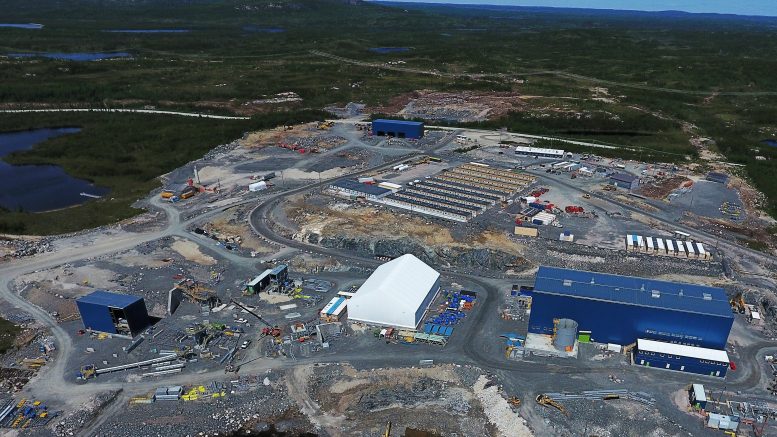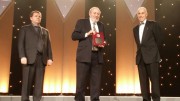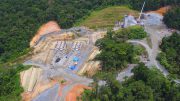Quebec, more than any other province in Canada, has been ahead of the curve in working to join the EV economy. Its vast hydroelectricity infrastructure gives it an advantage in clean, low-carbon energy that is essential to “green” manufacturing, and it has supported the nascent battery industry with significant public investment. It was also the first to outline plans for critical minerals exploration and production as well as for the development of a complete battery supply chain in-province — from mining through processing to manufacturing.
Premier François Legault’s government is targeting $7 billion in private and public investment in the lithium battery sector over a decade, with companies including BASF and General Motors already announcing new facilities. Even the vaunted Tesla is reportedly looking at setting up in eastern Canada, with Quebec a strong contender to host a new Tesla facility, according to the website Electric Autonomy.
Despite that downstream investment, Quebec still doesn’t have a producing lithium mine to feed into the provincial battery supply chain.
That is expected to change early next year, when the North American Lithium mine near La Corne is set to restart production of spodumene concentrate. Nemaska Lithium’s Whabouchi mine in the James Bay region and its lithium hydroxide plant (to be constructed in Bécancour) is anticipated to follow, with production starting in 2025.
Quebec’s lithium industry has a rocky history. The North American Lithium mine (previously Quebec Lithium) is on its fourth set of owners since 2008: Australia’s Sayona Mining (75%) and U.S.-based Piedmont Lithium (25%) bought the asset out of bankruptcy proceedings in 2021. (Notably, the previous owners were China’s Jilin Jien Nickel and battery giant CATL.)
Nemaska produced its first spodumene concentrate in early 2017, but suspended production and sought bankruptcy protection only two years later amid growing capital costs and tanking lithium prices. It is now owned 50% by Investissement Québec and, as of May 2022, 50% by U.S.-based Livent Corp. A feasibility study due out by the end of the year will outline how much more investment is needed, but the total costs are likely to be $1.5 billion, up from $875 million budgeted in 2019.
While the sting of past failures hasn’t completely faded, Patricia Mohr, independent analyst and founder of the publication Critical Metals for a Sustainable World, says that market conditions now look much more solid than they did just before the pandemic.
Mohr noted that after surging in 2017 and early 2018, international lithium prices began to decline in the second half of 2018 and into 2019, as four lithium mines in Australia came onstream.
“While the medium-term outlook appeared good for lithium at that time, these mines were a little ahead of market developments, as the transition to electric vehicles was just getting underway,” Mohr said in emailed comments to The Northern Miner.
“The outlook today appears to be different,” she added. Not only are lithium prices, which began to rebound in late 2020, now at historically high levels about 80% above 2021 prices (battery grade lithium carbonate was at US$70,700 per tonne in China at the end of August), but the EV transition is also well underway.
On a recent conference call, Livent president and CEO Paul Graves said there is a fundamental shortage of lithium that will last for at least the next couple of years. “Forecasted lithium demand growth, which shows no signs of slowing down, continues to outpace any reasonable projections of supply growth in our industry over the foreseeable future,” he said.

Patriot Battery Metals has reported the company’s best lithium drill intercept to date on its Quebec-based Corvette property. Credit: Patriot Battery Metals.
With total demand on a lithium carbonate equivalent basis up about 200,000 tonnes in 2022, he noted few new projects are coming onstream that would produce more than 30,000 or 40,000 tonnes annually. “It’s hard to flood the market when a single project is 30,000 tonnes and we need six or seven of them a year just to deal with the (demand) growth.”
Graves noted that automakers and battery manufacturers clamouring to lock down supplies of the light metal will need to offer mine developers more — especially given tight supply and the complexity and time involved in getting greenfield product to market.
“We continue to believe that simply providing loan commitments or signing non-binding MOUs will do little to accelerate current projects and will not make a difference at all to the fundamental engineering or technical challenges many of them face,” said the CEO.
Livent itself recently signed an agreement to supply GM with lithium hydroxide (from its brine based South American operations) over six years that, unlike most agreements miners have struck with end users, guaranteed it a prepayment of US$198 million.
While junior lithium producers are unlikely to score quite the same terms as a US$6-billion company, it seems that the tides may have turned in the wild lithium market that burned Quebec producers just a few years ago.






Be the first to comment on "The timing is finally right for Quebec’s lithium miners"